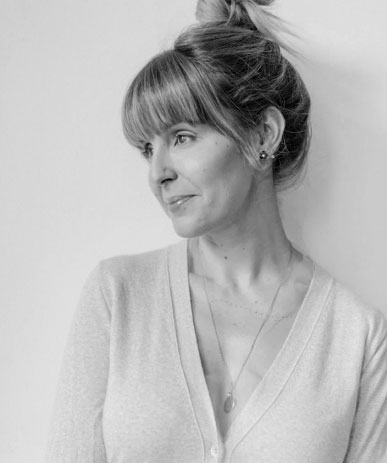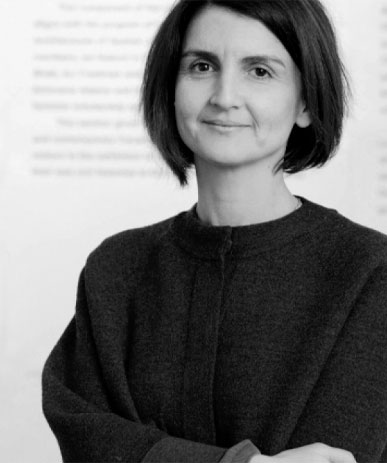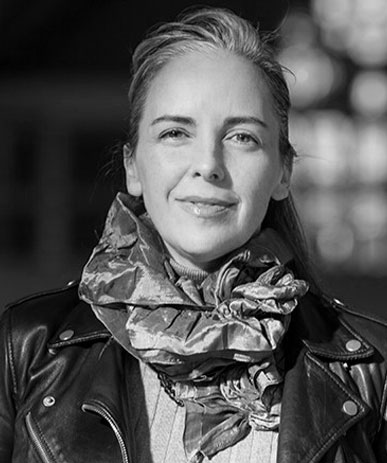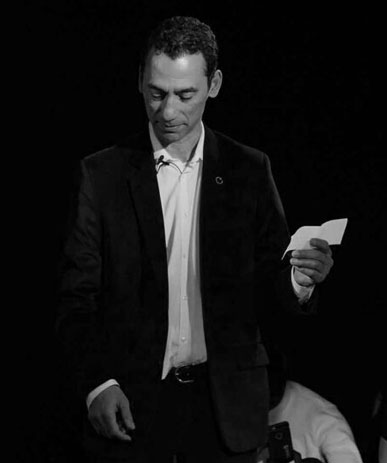CASOS DE ESTUDIO
JUSTICIA RESTAURATIVA
* Para referencias de imágenes, desplácese hasta la parte inferior de la página.
Author of case study: Marcela Torres Molano
Geopolitical location of space:
Teatro Faenza, Calle 22
Bogotá, Cundinamarca
Extant? Yes
Architect:
Architect: Arturo Tapia
Engineer: Jorge Muñoz
Inaugurated on April 3, 1924.
23 November 2019
The Black Market for Useful Knowledge and Non-Knowledge (“Mercado clandestino de conocimiento y no-conocimiento útil”) was a listening event of the Truth and Reconciliation Commission in cooperation with the Mobile Academy Berlin. It was supported by the German Colombian Peace Institute (CAPAZ) and the Central Bank of Colombia. The event was an encounter of 60 experts such as activists, politicians, scientists, ex-combatants and artists from different parts of the country.
The topic of the event “Water and Conflict” was established by the Commission as a response to how “In Colombia, the rivers and the bodies of water are cemeteries for countless victims, strategic territories for combat, and contaminated places. But they are also sites of memory, life, sustenance and resistance.”
No, official encounters between victims and perpetrators did not take place in this event, however this was an initiative of the Truth and Reconciliation Commission to allow the dialogue between civil society and experts such as activists and ex-combatants.
Yes, the whole event was designed with the main purpose of allowing one to one conversations and group listening from the public. The use of the acoustic of the space and audio technologies allowed the implementation of two rounds of 66 simultaneous conversations. The dialogues could be held in five different languages, including Ticuna, a traditional Indigenous language. While the participants were having one to one conversations, the public was invited to listen to some of the conversations through a headphone system, and to read the transcripts on screens located around the theatre. The conversations between experts and individuals were intended to be informal, direct and to avoid type of hierarchical order.
Experts such as activists, politicians, scientists, ex-combatants and artists from different parts of the country and general public.
This event took place in a private restored theatre that belongs to the Central University, a private education institution in Bogotá.
A very important political aspect of this event was the day of the event, enormous community mobilisations against the brutality of police and the lack of interest of the government with the peace agreement gathered across Bogotá and Colombia. During the event, the doors of the theatre had to be closed on many occasions because of safety reasons.
The Faenza Theatre is an art nouveau architecture building that opened its doors in 1924. It was initially used for musical performances and became a cinema theatre for independent films in 1948. In 1975, it became part of the National Heritage buildings of Colombia and it was later transformed into a low budget porn film theatre. The Faenza was empty from 1980 until 2004, and was renovated in 2005 by the Central University.
The theatre has a rectangular shape of 21 meters wide by 45 meters long with a capacity of 1000 spectators. It is a multipurpose room that allows the transformation of the space depending on the required use. It is now used for social or academic purposes. For the Listening event, there were specific spatial elements that made the conversations and the listening possible: first, there was a clear disposition of the space, where conversations were happening in the middle, while the public was seated around this central space. Second, the use of tables for two people allowed the conversations to happen on an informal level and avoided any type of hierarchy between the experts and the non-experts. Third, the use of warm lighting and sounds as time counting mechanisms allowed the organisation of the event without causing disruption to the conversations. Although the theatre is considerably big and formal, through the spatial distribution and the aesthetics of the event, the place became a welcoming and warm space.
According to the participants of the event, the atmosphere of the space, the spatial disposition and the opportunity for one to one dialogues, allowed to generate a feeling of confidence and safety between the interlocutors. One important element of this event was the possibility of whispering as a means of communication that created a deeper human connection.
Moreover, the possibility of moving the conversation throughout the space by using screens and headphone mechanisms, allowed all the participants to be indirectly involved in most of the conversations. The experience of participants became the main element for creating a welcoming and safe atmosphere for listening.
One important aspect of the event was that it took place in a very contested area of the city, where large protests against the government were taking place on the same exact day. The protests that started on November 21, 2020, and lasted for weeks, were one of the biggest community mobilisations against the brutality of police and the lack of interest of the government in the implementation of the peace agreement.

es autora, conferencista, columnista y podcaster en los campos de la arquitectura y las artes decorativas. Obtuvo su un pregrado en Comercio con especialización en Marketing de la Escuela de Negocios John Molson y actualmente se encuentra realizando su maestría en Historia del Arte en la Universidad de Concordia, Montreal. Además, estudió Psicología Industrial en Los Ángeles, California y es autora de dos libros sobre diseño (2015, 2018) publicados por Les Éditions Cardinal.

es colombiana, candidata a doctorado en el Departamento de Historia del Arte de la Universidad Concordia. Tiene experiencia en diseño arquitectónico y activismo comunitario y es maestra en Construcción y Diseño Urbano de la Escuela de Arquitectura Bartlett, Londres, Inglaterra. Sus intereses se centran en el arte y movimientos sociales, el activismo colaborativo en escenarios de posconflicto, el arte colectivo y el arte producido en relación con el entorno construido.

es candidato a doctorado en Humanidades de la Universidad de Concordia, enfocado en la agencia espacial, la estética social, las narrativas juveniles y las representaciones gráficas de la memoria urbana. Ha publicado sobre la relación entre los niños, el juego y el espacio público en Cartagena, Colombia. También ha trabajado como editor en proyectos literarios, entre ellos Territorio Fértil, que recibió el premio María Nelly Murillo Hinestroza de literatura afrocolombiana.

es profesora asociada y Catedrática de investigación de Canadá para la arquitectura de espacios de Justicia (Tier 2) en la Escuela de arquitectura Peter Guo-hua Fu de la Universidad de McGill University, Montréal, Canada. Se enfoca en la investigación de viviendas en entornos de bajos ingresos, diseño participativo, protesta civil, diseño urbano y paisajes y razas. Sus publicaciones incluyen el libro co-editado, Orienting Istanbul (2010) y el libro individual, Istanbul Open City (2018).

es una artista y profesora asociada y Catedrática de investigación de Canadá para la arquitectura de espacios de Justicia (Tier 2) en la Escuela de arquitectura Peter Guo-hua Fu de la Universidad de McGill University, Montréal, Canada. Se enfoca en la investigación de viviendas en entornos de bajos ingresos, diseño participativo, protesta civil, diseño urbano y paisajes y razas. Sus publicaciones incluyen el libro co-editado, Orienting Istanbul (2010) y el libro individual, Istanbul Open City (2018).

es el antiguo catedrático de Canadá en Historia Oral y performance (2016-2021), es profesor asociado al departamento de Teatro de la Universidad de Concordia y es codirector del Centro de Historia Oral e Historia digital (COHDS). Por medio de la financiación de Canada Foundation for Innovation, creo en 2018 el Laboratorio de actos de escucha , un centro líder de investigación y creación para el poder transformador de escuchar.